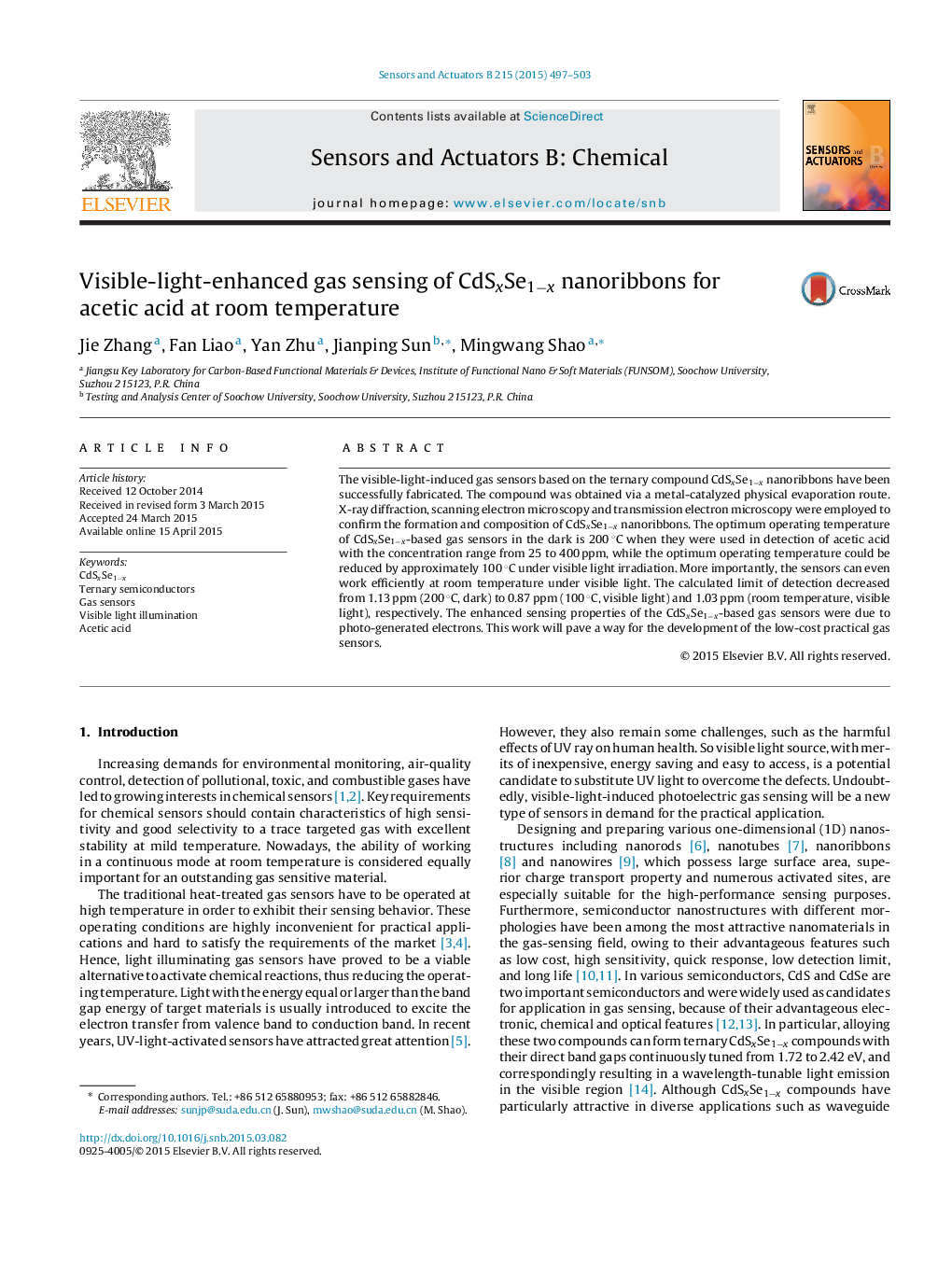| Article ID | Journal | Published Year | Pages | File Type |
|---|---|---|---|---|
| 7145900 | Sensors and Actuators B: Chemical | 2015 | 7 Pages |
Abstract
The visible-light-induced gas sensors based on the ternary compound CdSxSe1âx nanoribbons have been successfully fabricated. The compound was obtained via a metal-catalyzed physical evaporation route. X-ray diffraction, scanning electron microscopy and transmission electron microscopy were employed to confirm the formation and composition of CdSxSe1âx nanoribbons. The optimum operating temperature of CdSxSe1âx-based gas sensors in the dark is 200 °C when they were used in detection of acetic acid with the concentration range from 25 to 400 ppm, while the optimum operating temperature could be reduced by approximately 100 °C under visible light irradiation. More importantly, the sensors can even work efficiently at room temperature under visible light. The calculated limit of detection decreased from 1.13 ppm (200 °C, dark) to 0.87 ppm (100 °C, visible light) and 1.03 ppm (room temperature, visible light), respectively. The enhanced sensing properties of the CdSxSe1âx-based gas sensors were due to photo-generated electrons. This work will pave a way for the development of the low-cost practical gas sensors.
Related Topics
Physical Sciences and Engineering
Chemistry
Analytical Chemistry
Authors
Jie Zhang, Fan Liao, Yan Zhu, Jianping Sun, Mingwang Shao,
